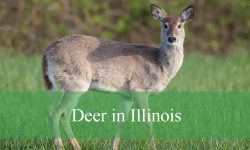Explore the fascinating world of hawks with white heads through stunning pictures and informative details. From the iconic Bald Eagle to the elegant White Hawk, discover 13 remarkable species that command attention with their regal presence and formidable hunting abilities.
Different Types of Hawks with White Heads
Black-and-white Hawk-Eagle
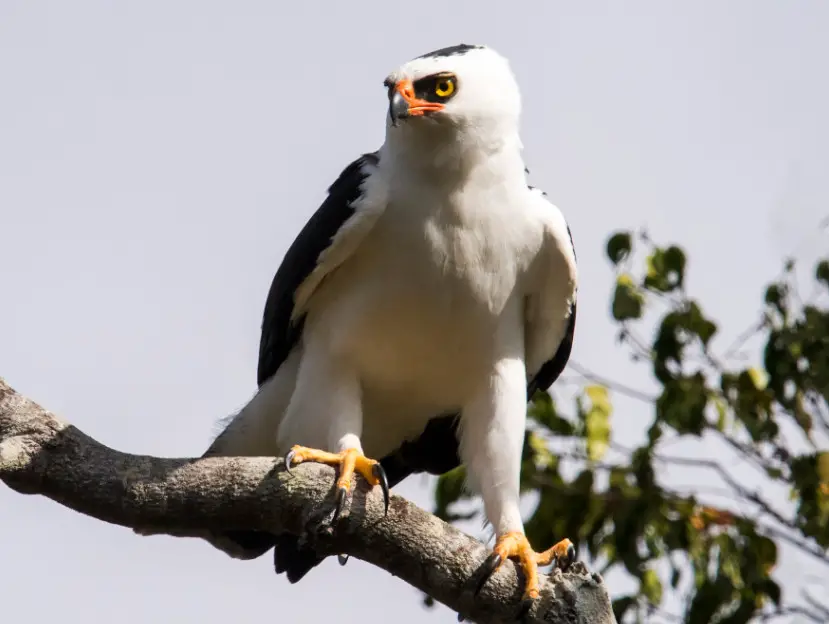
The Black-and-white Hawk-Eagle, scientifically referred to as Spizastur melanoleucus, stands out with its striking plumage characterized by black and white patterns and a distinctive small crest resembling a black cap on its head, setting it apart from other hawks.
With a length of 20–24 inches (51–61 cm) and weighing between 27 and 29 ounces (765–822 g), these hawk-eagles exhibit elegance and grace in flight. Their white head, neck, and body contrast with brownish-black wings and grayish-brown barred tails, while orange ceres and yellow eyes, along with black-tipped beaks, add to their distinctive appearance.
Feeding primarily on various tree-dwelling birds, supplemented by mammals, toads, and reptiles, these hawk-eagles employ aerial hunting techniques. They search for prey while flying and dive with precision to capture their victims, showcasing their agility and predatory prowess in the canopy of their forest habitats. In their majestic presence and formidable hunting skills, Black-and-white Hawk-Eagles embody the essence of the wild.
Rough-legged Hawk

The Rough-legged Hawk, scientifically named Buteo lagopus, is also affectionately known as the Rough-legged Buzzard, a testament to its adaptability and resilience in the Arctic tundra. Thriving in harsh northern landscapes, these eagle-like raptors boast unique feathered legs, providing insulation against the frigid temperatures of their habitat.
With a wingspan spanning 52 to 58 inches (132–147 cm) and a length of 18–24 inches (45.7–61 cm), Rough-legged Hawks command the skies with their impressive presence. Their plumage showcases a variety of brown, black, and white feathers, offering effective camouflage amidst the diverse terrain they navigate.
As opportunistic hunters, Rough-legged Hawks primarily prey on rodents, utilizing their keen eyesight and agility to capture their quarry. However, their diet also encompasses other small mammals, birds, slugs, and reptiles, showcasing their adaptability and resourcefulness in sustaining themselves in their Arctic domain.
White Hawk
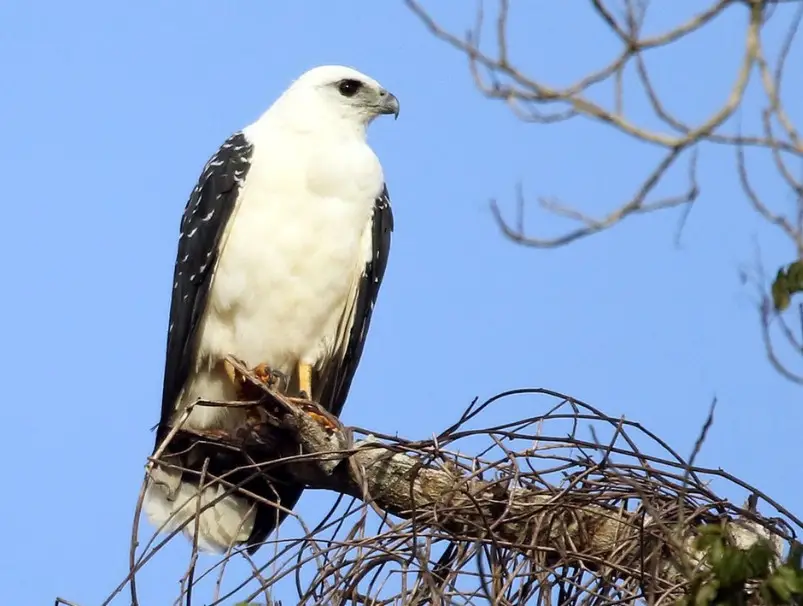
The White Hawk, scientifically known as Pseudastur albicollis, captivates onlookers with its stunning, entirely white plumage and graceful flight. Native to the neotropical regions of Central and South America, these majestic birds inhabit diverse habitats, from tropical rainforests to cloud forests and woodland areas.
Measuring between 19 and 22 inches (48–56 cm) in length, with a wingspan of 38.6–46.1 inches (98–117 cm), White Hawks glide effortlessly through the canopy in search of prey. Their diet primarily consists of lizards, small mammals, snakes, and large insects like locusts, with occasional scavenging on carrion.
During a birdwatching expedition near the Amazon River Basin, I observed White Hawks exhibiting a fascinating behavior. They often trailed behind groups of Capuchin monkeys, although not as predators. Instead, they patiently awaited opportunities to target animals startled by the monkeys, showcasing their strategic hunting tactics and adaptability in the dense jungle environment.
Mantled Hawk
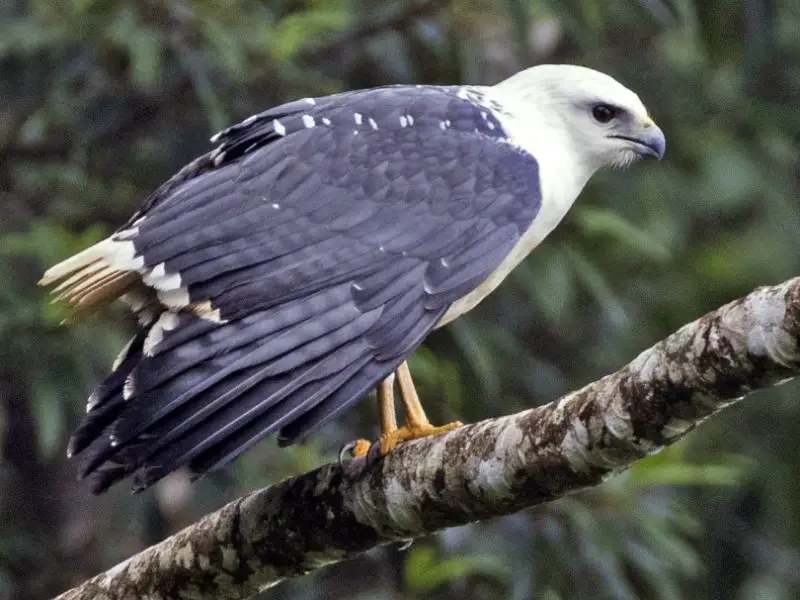
The Mantled Hawk, scientifically referred to as Pseudastur polionotus, presents a striking visage with its white head adorned with black or dark gray feathers on its mantle cover, exuding a truly sophisticated presence. Indigenous to South America, these hawks inhabit lush rainforests, cloud forests, and wooded areas across Central and South America.
Measuring between 16 and 18 inches (41–46 cm) in length, with a wingspan ranging from 46.5 to 50.8 inches (118–129 cm), Mantled Hawks display remarkable adaptability in their choice of habitat. From lowland forests to mountainous regions, they thrive in diverse environments, including forest edges, woodlands, and even urban areas within cities.
These versatile predators primarily feed on small to medium-sized mammals, particularly rodents, constituting a significant portion of their diet. Additionally, they prey on birds, reptiles, amphibians, and large insects, showcasing their adaptability and role as apex predators in their ecosystems.
Osprey
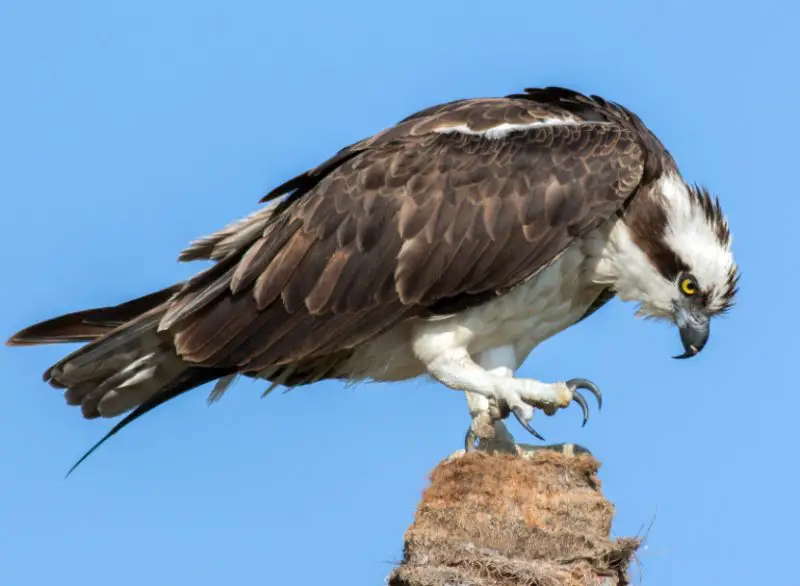
The Osprey, scientifically known as Pandion haliaetus, is a familiar sight along the shorelines of North America, where it tirelessly hunts for live fish. Also referred to as the Seal Hawk, River Hawk, and Fish Hawk, this majestic bird boasts distinctive features that set it apart.
Sporting a regal white head with a prominent brown streak extending gracefully through its eyes, the Osprey commands attention with its elegant appearance. Its upper plumage showcases a rich dark brown hue, while the underparts gleam with pristine white.
Preferring habitats near coastlines or large bodies of water such as lakes and rivers, Ospreys construct their nests with care and precision, often atop tall structures or in secluded spots along the shoreline. With a wingspan ranging from 54 to 72 inches (137–183 cm) and a length of 20 inches (50.8 cm), these magnificent birds epitomize grace and agility as they soar over the water, embodying the spirit of the wild in their pursuit of sustenance.
Ferruginous Hawk
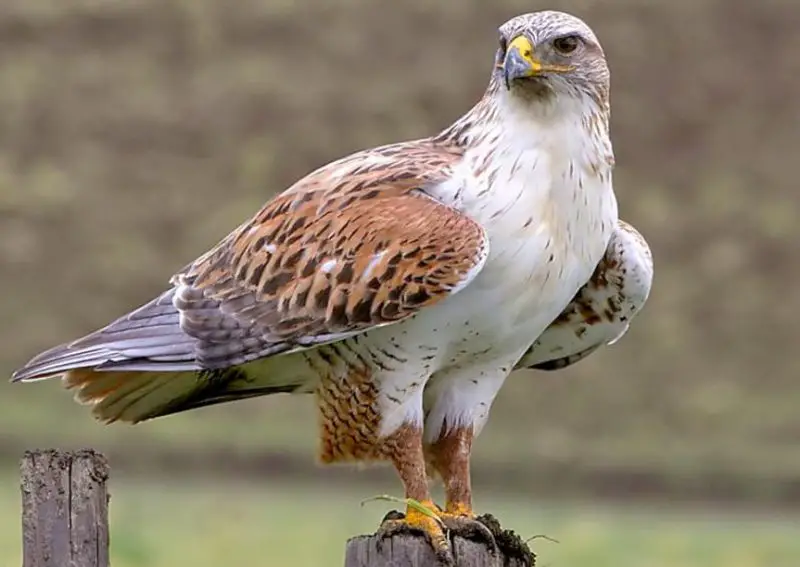
The Ferruginous Hawk, scientifically known as Buteo regalis, commands attention as one of the most formidable birds of prey, renowned for its aggressive nature within the Buteos family. With a length ranging from 22 to 27 inches (56–69 cm) and a weight of 52.9 ounces (1500 g), these hawks exude power and dominance.
Distinguished by their white heads, Ferruginous Hawks have achieved widespread prominence as the most common hawk species across North America, a testament to their adaptability and successful colonization of diverse habitats.
Feeding primarily on small mammals, including mice, voles, rats, and rabbits, Ferruginous Hawks play a crucial role in controlling rodent populations in their ecosystems. Their predatory prowess and territorial behavior underscore their importance as apex predators, ensuring the balance of prey species in their habitats. In their majestic flight and predatory prowess, Ferruginous Hawks epitomize the spirit of the wild, embodying strength and resilience in the face of challenges.
Black-faced Hawk
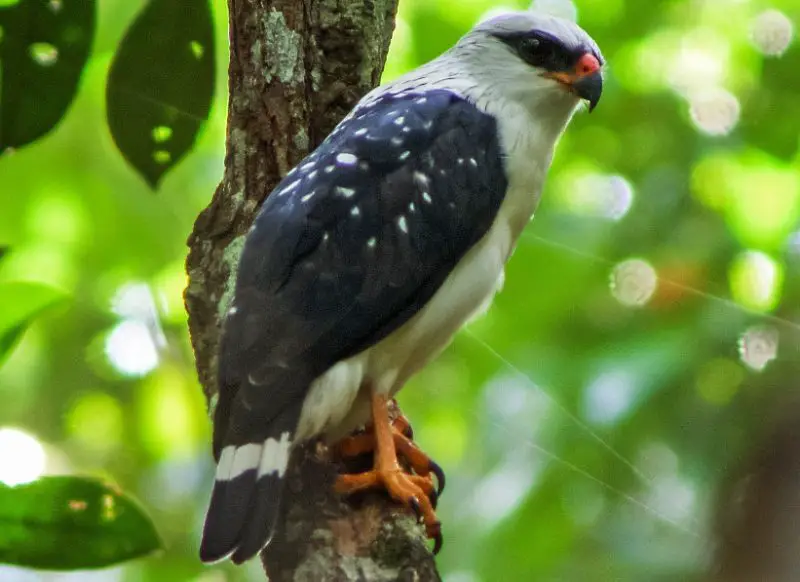
The Black-faced Hawk, scientifically named Leucopternis melanops, graces the skies of South and Central America and Mexico with its elegant presence. With a length of 21 inches (53.3 cm) and weighing between 10.5 and 11.2 ounces (297–317 g), these birds exhibit agility and grace as they soar effortlessly through their habitat.
Preferring the edges of forests and lush lowland forests near mangroves and rivers, Black-faced Hawks find ample prey in their diverse surroundings. Their diet includes fish, frogs, large insects, rabbits, rats, mice, squirrels, and various other small animals, showcasing their versatility as hunters.
One intriguing aspect of their hunting behavior is their inclination to target avian species, particularly Blue Jays. Known for their mimicry of the hawk’s calls and appearance, Blue Jays unwittingly draw the attention of these skilled predators.
Gray Goshawk

The Gray Goshawk, scientifically known as Accipiter novaehollandiae, is an amazing bird of prey distinguished by white stripes over its eyes. Widely encountered in Australia, these hawks exhibit notable sexual dimorphism.
Adult males sport a slate-gray upper body, complemented by white underparts adorned with fine gray barring. In contrast, adult females and juveniles feature a striking barred pattern of gray and white, facilitating their camouflage within the forest canopy.
With a length ranging from 12 to 18 inches (30–45 cm) and weighing between 11.6 and 25.4 ounces (330–720 g), Gray Goshawks are agile hunters specializing in rodents as their primary diet. Their adaptability and prowess in navigating Australia’s diverse landscapes make them integral components of the country’s ecosystem.
Long-legged Hawk
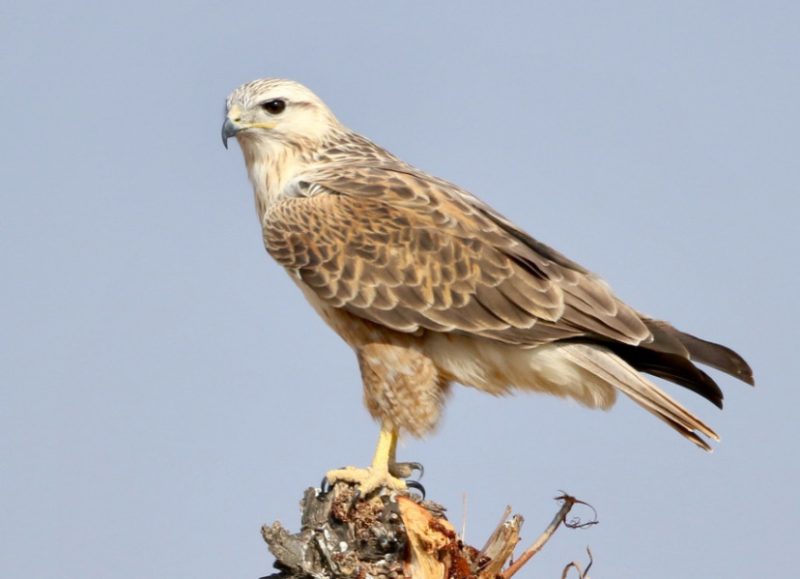
The Long-legged Hawk, scientifically named Buteo rufinus, is renowned for its elegant and fiery appearance, earning it the monikers of Long-legged Buzzard. With a length ranging from 20 to 25 inches (50.8–63.5 cm) and a weight of 24–40 ounces (680–1133 g), these hawks exhibit both grace and power in their stature.
Featuring a white head and keen eyesight, Long-legged Hawks possess remarkable aerial agility, making them adept hunters. Their plumage varies, typically displaying dark brown feathers on the upper parts of their body, while the underside showcases a lighter brown hue with streaks of white.
Adaptable to diverse environments, Long-legged Hawks inhabit a range of habitats, from lush lowland forests to awe-inspiring montane regions. Capable of ascending to altitudes of approximately 9,000 feet, these magnificent birds epitomize the spirit of the wild, embodying strength and versatility in their natural habitats.
Copper’s Hawk
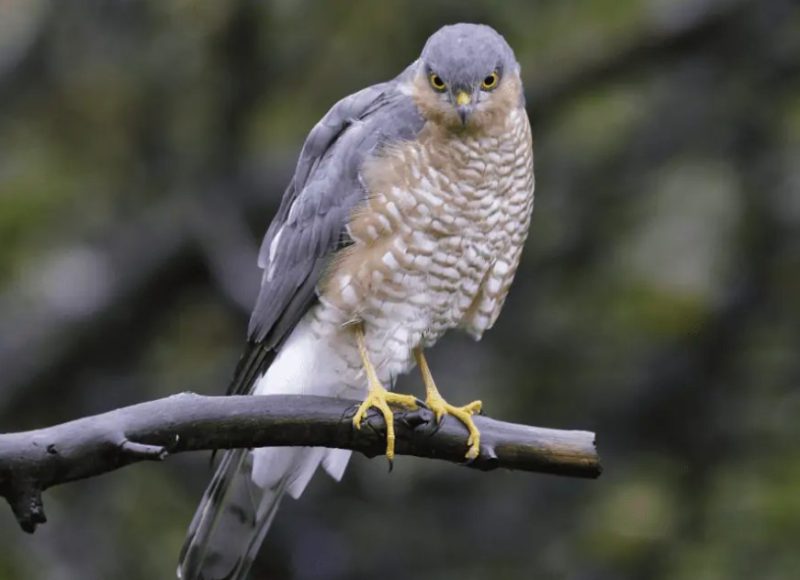
The Copper’s Hawk, scientifically known as Accipiter cooperii, sets the skies ablaze with its fiery plumage and remarkable hunting prowess, epitomizing the fierce spirit of the avian realm. Primarily found in South America, this hawk with a white head is a master of stealth and surprise.
I once had the privilege of witnessing a Copper’s Hawk in action, showcasing its hunting technique known as “ambushing.” Through my binoculars, I observed as the hawk skillfully navigated through dense foliage, silently closing in on its unsuspecting prey, an American Robin. With a sudden burst of speed, the hawk seized its quarry with its strong talons, demonstrating the precision and agility that make it a formidable predator in its habitat. In its fiery presence and strategic hunting tactics, the Copper’s Hawk exemplifies the captivating beauty and raw power of the natural world.
White-necked Hawk
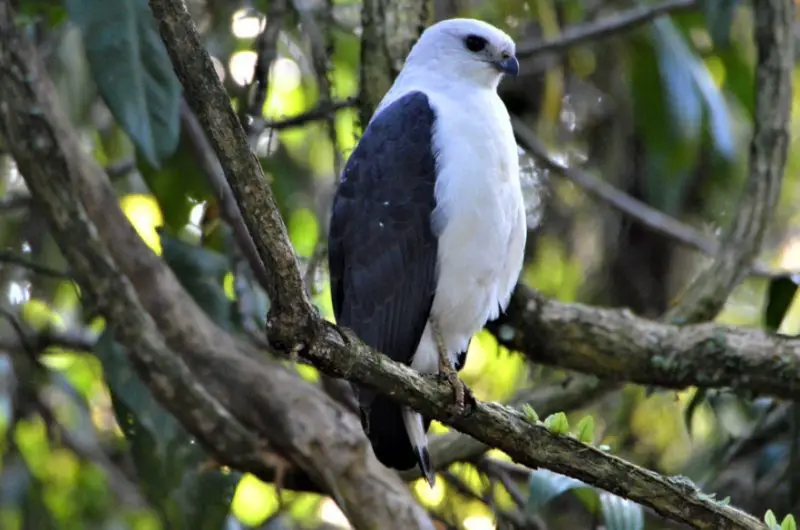
The White-necked Hawk (Buteogallus larnulatus) is a remarkable raptor, distinguished by its appearance and formidable presence in the tropical rainforests and wooded areas of Central and South America. . Classified as vulnerable, these birds have a regal stature, with a length of 17 to 19 inches (43–48 cm) and a weight of 26.1 to 31.7 ounces (740–900 g). Their wingspan ranges from 36 to 40 inches (91–101 cm), allowing them to move gracefully through their lush habitat.
One of the most notable features of the White-necked Hawk is its pristine plumage, which is characterized by a white neck, head, and underparts that contrast sharply with the dark gray or black upperparts. Adding to the vibrancy is the yellow base of their sharp, hook-shaped beak.
These agile hunters demonstrate remarkable precision in pursuing prey, including small mammals, birds, reptiles, and large insects. Their keen eyesight and agile movements make them formidable predators in their ecosystem.
Nesting in dense trees, White-necked Hawks build sturdy nests, laying 1 to 2 eggs that are carefully cared for by both parents. This cooperative effort ensures the survival of their offspring in the challenging jungle environment.
White-necked hawks face threats from habitat loss, deforestation, and human encroachment. Conservation efforts to preserve their habitat are vital to ensuring the continued survival of these majestic birds.
Hawaiian Hawk
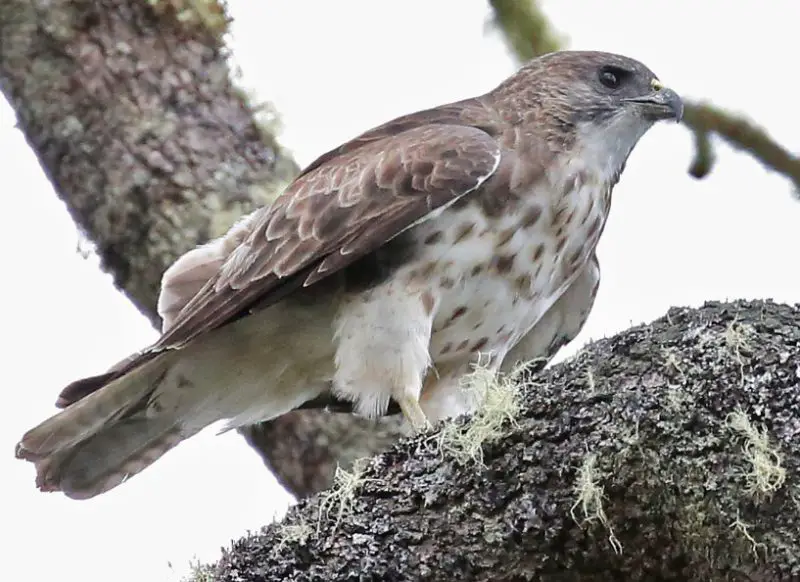
The Hawaiian Hawk, scientifically known as Buteo solitarius, holds a special place in the hearts and culture of the Hawaiian Islands. Revered as the ‘aumakua,’ a spiritual guardian embodying grace and protection, these birds are emblematic of the Aloha archipelago’s natural and cultural heritage.
With a wingspan ranging from 40 to 45 inches (101.6–114.3 cm) and a length of 15.5–18 inches (39.4–45.7 cm), Hawaiian Hawks command the skies with their regal presence. Their dark brown plumage, accented by prominent white heads and piercing yellow eyes, exudes an aura of intelligence and resilience.
As opportunistic hunters, they adapt their diet to various food sources, preferring rodents, insects, and invertebrates like crickets and earthworms. This versatility ensures their survival in the diverse ecosystems of the Hawaiian state.
People Who Read This Also Read:

